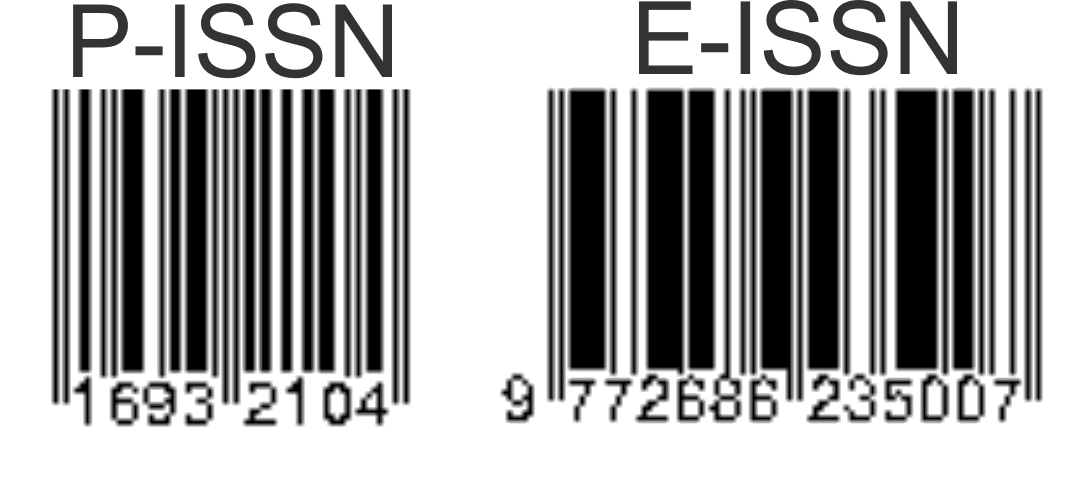Applying AHP-TOPSIS Approach for Selecting Marketplace based on Preferences of Generation Z
Abstract
Keywords
Full Text:
PDFReferences
Adellia, N., & Prasetio, A. (2016). Customer Perception Mapping Analysis of Indonesian E-commerce Marketplace Sites based on Attributes Usability , Site Design , Information Quality , Trust , and Empathy (Case Study of Tokopedia, Bukalapak, Elevania, Qoo10, and Rakuten). 2016 4th International Conference on Cyber and IT Service Management, 1–7. IEEE.
Appsflyer. (2021). The State of E-Commerce App Marketing.
Chadawada, R., Sarfaraz, A., Jenab, K., & Pourmohammadi, H. (2015). Integration of AHP-QFD for selecting facility location. The Eletronic Library, 22(3), 411–425.
Frieyadie, Sukmawati, A. H., & Nurajijah. (2020). Combination of the SAW and TOPSIS Method for Determining the Best Marketplace Recommendations. Journal of Physics: Conference Series, 1641(1). https://doi.org/10.1088/1742-6596/1641/1/012004
Gustavsson, M., & Wänström, C. (2009). Assessing information quality in manufacturing planning and control processes. International Journal of Quality and Reliability Management, 26(4), 325–340.
Hasan, A. (2008). Marketing. Yogyakarta: Penerbit MedPress.
Ishak, A., Ginting, R., & Wanli, W. (2021). Evaluation of e-commerce services quality using Fuzzy AHP and TOPSIS. IOP Conference Series: Materials Science and Engineering, 1041(1), 012042. https://doi.org/10.1088/1757-899x/1041/1/012042
Jatiningrum, W. S., Astuti, F. H., Sabiq, C. S., Andika, A. L., Adityo, L. B., & Mastrisiswadi, H. (2019). Consumer Preference for Mocaf Packaging using Analytical Hierarchy Process (AHP). Jurnal Ilmiah Teknik Industri, 18(2), 153–160.
Korgaonkar, P. K., & Wolin, L. D. (1999). A Multivariate Analysis of Web Usage. Journal of Advertising Research, 39(2), 53–68.
Kusumawardani, R. P., & Agintiara, M. (2015). Application of Fuzzy AHP-TOPSIS Method for Decision Making in Human Resource Manager Selection Process. Procedia Computer Science, 72, 638–646.
Lokadata.id. (2020). Pasar E-Commerce Terbesar Indonesia dari Milenial. Retrieved from Lokadata website: https://lokadata.id/artikel/pasar-e-commerce-terbesar-indonesia-dari-milenial
Michael, D. (2019). Where Millennials end and Generation Z begins | Pew Research Center. Pew Research Center, 1–7.
Mohapatra, S. (2013). E-Commerce Strategy. In E-Commerce Strategy (pp. 155–171). New York: Springer Science Business Media.
Narti, Sriyadi, Rahmayani, N., & Syarif, M. (2019). Pengambilan Keputusan Memilih Sekolah Dengan Metode AHP. 6(1), 143–150.
Prakash, C., & Barua, M. K. (2015). Integration of AHP-TOPSIS method for prioritizing the solutions of reverse logistics adoption to overcome its barriers under fuzzy environment. Journal of Manufacturing Systems, 37, 599–615.
Ramseook-Munhurrun, P., Naidoo, P., & Nundlall, P. (2010). A proposed model for measuring service quality in secondary education. International Journal of Quality and Service Sciences, 2(3), 335–351.
Saaty, T. L. (2008). Decision making with the analytic hierarchy process. International Journal Services Science, 1(1), 83–98. https://doi.org/10.1108/JMTM-03-2014-0020
Siew, L. W., Bakar, M. A. Bin, Hoe, L. W., Wai, C. J., & Lee, M. H. (2018). Evaluation on the preference of coffee shop among the undergraduate students with analytic hierarchy process model. International Journal of Supply Chain Management, 7(4), 209–215.
Susanto. (2004). Information quality is defined as an ability of a company to satisfy the customers’ expectations towards stated and implied needs of information. Bandung: Penerbit Linggar Jaya.
Tamrakar, S., Tawari, D. A., & Tandon, P. (2014). Application of Analytical HIERARACHY Process in Industries n. Ijmer, 4(3), 28–32.
TrenAsia. (2021). Top 10 Best Selling E-Commerce 2021 in Indonesia: Tokopedia Becomes the Champion, Shopee Couped.
Ulfa, M. A., Selo, & Hidayat, M. (2021). K-MEANS APPROACH ( CASE STUDY : SHOPEE ). ASEAN Journal of System Engineering, 5(2), 31–38.
Vimal, J., Chaturvedi, V., & Dubey, A. K. (2012). Application of TOPSIS Method for Supplier Selection in Manufacturing Industry. 2(5), 25–35.
DOI: https://doi.org/10.31315/opsi.v15i1.6824
Refbacks
- There are currently no refbacks.
Sekretariat :
Jurusan Teknik Industri
FTI UPN "Veteran" Yogyakarta
d.a Jalan Babarsari 2 Tambakbayan Yogyakarta 55281
Telp. (0274) 486256
Website http://jurnal.upnyk.ac.id/index.php/opsi
email : jurnal.opsi@upnyk.ac.id
indexed by:
 |  |  |  |
 |  |  |  |
 |

This work is Licensed Under a Creative Commons Attribution 4.0 International license.
View My Stats




